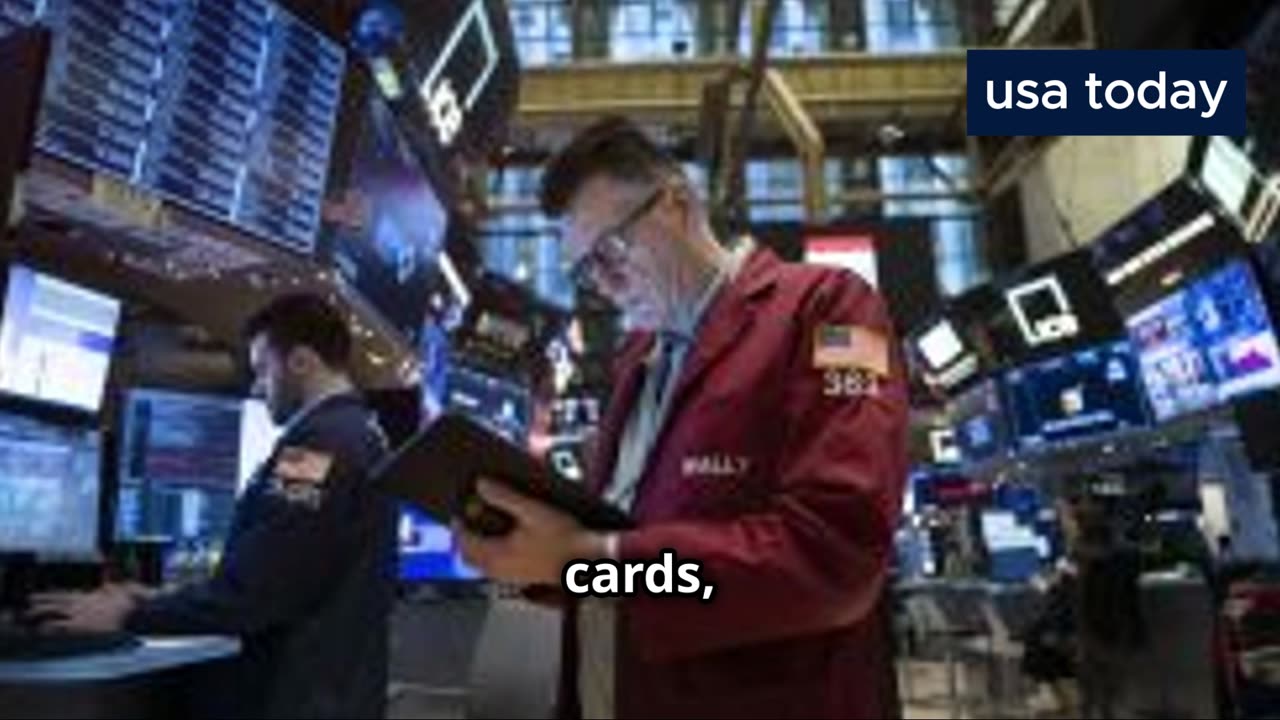Premium Only Content

Fed Chair Powell Hints at September Rate Cuts!
Noting that inflation is easing while the job market is weakening, Federal Reserve Chair Jerome Powell provided the strongest signal yet Friday that the central bank plans to begin cutting historically high interest rates in September.
He gave no clues on how much the Fed would lower its key rate, but most forecasters expect a quarter-point reduction.
“The time has come for policy to adjust,” Powell said Friday at the Fed’s annual symposium in Jackson Hole, Wyoming. “The direction of travel is clear, and the timing and pace of rate cuts will depend on incoming data, the evolving outlook, and the balance of risks.”
He added: “While the task is not complete, we have made a good deal of progress toward that outcome. … My confidence has grown that inflation is on a sustainable path back to 2%,” which is the Fed’s inflation goal.
The language and shift in tone is significant. For months, the Fed has said it would not lower its key rate – now at a 23-year high of 5.25% to 5.5% − until officials were confident inflation was on sustained path to 2%. In June, the Fed’s preferred inflation measure was at 2.5%, down from a high of 5.6% in mid-2022.
Meanwhile, the torrid post-COVID-19 labor market that saw record job growth and sharply rising wages is softening.
“The upside risks to inflation have diminished,” Powell said. “And the downside risks to employment have increased.
“It seems unlikely that the labor market will be a source of elevated inflation pressures anytime soon. We do not seek or welcome further cooling in labor market conditions.”
After a report early this month revealed unusually weak job growth in July and the stock market tumbled, many forecasters said the Fed could cut rates by half a percentage point. Since then, however, strong economic reports have allayed concerns and the market has recovered.
Fed rate cuts would lower borrowing costs for mortgages, credit cards and other consumer and business loans while likely juicing the stock market. It also would reduce bank saving account yields that finally have been generating healthy returns.
Powell’s remarks were widely expected after recent reports showed inflation continued to ease last month while the job market weakened. His comments went further than those he made at a news conference early this month after the Fed held rates steady. At that time, he said inflation has eased notably and officials could cut rates in September “if the data support that.”
Since then, reports have revealed that in July, a different inflation measure, the consumer price index, fell to 2.9%, the lowest level in three years. Meanwhile, U.S. employers added just 114,000 jobs last month, well below the 175,000 expected, and the unemployment rate rose from 4.1% to 4.3%, highest since October 2021.
The figures were so disappointing that the stock market sold off on fears the nation could be headed for a recession and the Fed blundered by not lowering rates at its early August meeting or earlier. Many economists predicted the central bank would cut rates by half a percentage point next month instead of a more typical quarter-point.
The Fed lifts rates to curtail borrowing and economic activity to tame inflation. It lowers rates to stimulate the economy and job market, to stave off a recession or dig the country out of one.
But recent strong economic reports have calmed nerves and stocks have rallied, more than making up for its losses several weeks ago. Sturdy retail sales were better than expected in July. And after leaping last month, initial jobless claims – a reliable gauge of layoffs – have fallen in recent weeks.
Still, forecasters have said a weak jobs report for August could put a half-percentage point cut on the table, especially if inflation continued to ease this month.
More broadly, the job market is decidedly slowing as employers pull back hiring and investing after the Fed’s historic rate hikes. Employers added a still solid average 170,000 jobs the past three months, but that’s down from 227,000 from January through April.
By year’s end, futures markets expect the Fed to cut its key short-term rate three times by a total of as much as a percentage point.
From March 2022 to July 2023, the Fed raised its key rate from near zero to a 23-year high of 5.25% to 5.5% to subdue the largest inflation spike in 40 years.
-
 18:38
18:38
VSiNLive
2 days agoProfessional Gambler Steve Fezzik LOVES this UNDERVALUED Point Spread!
104K17 -
 LIVE
LIVE
Right Side Broadcasting Network
10 days agoLIVE REPLAY: President Donald J. Trump Keynotes TPUSA’s AmFest 2024 Conference - 12/22/24
5,085 watching -
 4:31
4:31
CoachTY
23 hours ago $27.59 earnedCOINBASE AND DESCI !!!!
147K11 -
 10:02
10:02
MichaelBisping
22 hours agoBISPING: "Was FURY ROBBED?!" | Oleksandr Usyk vs Tyson Fury 2 INSTANT REACTION
76.8K13 -
 8:08
8:08
Guns & Gadgets 2nd Amendment News
2 days ago16 States Join Forces To Sue Firearm Manufacturers Out of Business - 1st Target = GLOCK
104K86 -
 10:17
10:17
Dermatologist Dr. Dustin Portela
2 days ago $18.00 earnedOlay Cleansing Melts: Dermatologist's Honest Review
143K14 -
 1:02:20
1:02:20
Trumpet Daily
2 days ago $44.35 earnedObama’s Fake World Comes Crashing Down - Trumpet Daily | Dec. 20, 2024
99.9K61 -
 6:29
6:29
BIG NEM
1 day agoCultivating God Mode: Ancient Taoist NoFap Practices
73.5K20 -
 30:53
30:53
Uncommon Sense In Current Times
2 days ago $11.24 earned"Pardon or Peril? How Biden’s Clemency Actions Could Backfire"
86.6K7 -
 40:01
40:01
CarlCrusher
1 day agoSkinwalker Encounters in the Haunted Canyons of Magic Mesa - ep 4
79.7K10